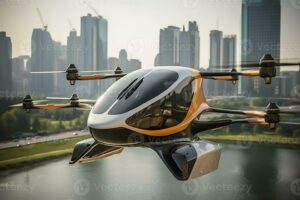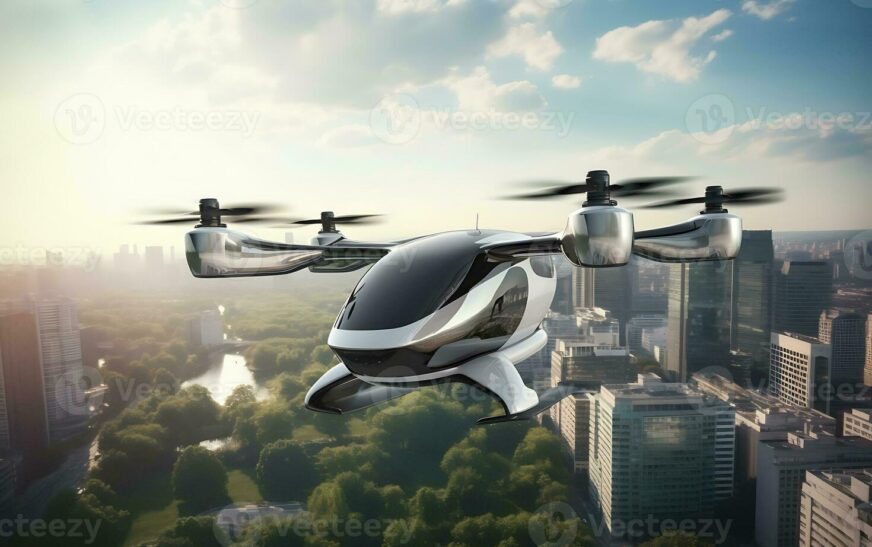Now sky is open for air taxis in India.Technology is in hand of people that to fly from Delhi to Gurugram in just 7min, generally which take 2hr30min in conjusted traffic. Now it reduce to only 7min. Air taxis plan is in trail basis, very soon delhitians will get a scope to acquired this service and free from time limit hectic congestion from crowding.A revolutionary shift in urban transportation, promising to alleviate congestion, reduce travel time, and enhance connectivity. With the rapid advancement of technology,particularly in electric propulsion and autonomous flight, the concept of air taxis has evolved from science fiction to a tangible reality. In India, where densely populated cities and traffic congestion are major challenges, air taxis offer a promising solution to transform the way people commute. Introduction of air taxis in India has the potential to address several pressing issues faced by urban areas. Firstly, they can significantly reduce travel time by bypassing ground-level traffic congestion. With the ability to fly over obstacles and travel in a straight line, air taxis can offer a faster and more efficient mode of transportation, particularly for short to medium distances within cities.

Air taxis have the potential toenhance connectivity, especially in regions with inadequate or underdeveloped transportation infrastructure. In India, where many remote areas lack access to reliable transportation, air taxis can bridge the gap and provide a means of connecting people to essential services such as healthcare, education, and employment opportunities.Additionally, air tAdditionally, air taxis have theadvantage of being environmentally friendly, particularly if they are powered by electric propulsion systems. Compared to traditional fossil fuel-powered vehicles, electric air taxis produce fewer emissions, helping to mitigate air pollution and reduce carbon footprint. This aligns with India’s goals to transition to cleaner and more sustainable modes of transportation to combat climate change.
The advent of autonomous flight technology has the potential to make air taxis safer and more accessible to the general public. By removing the need for a human pilot, autonomous air taxis can operate with greater precision and efficiency, while also reducing the risk of human error. This could potentially lower operating costs and make air taxi services more affordable and accessible to a wider range of passengers.
However, the widespread adoption of air taxis in India also presents several challenges that need to be addressed. One of the primary concerns is infrastructure development. To support the operation of air taxis, India will need to invest in the construction of vertiports or helipads in urban areas, as well as the necessary charging infrastructure for electric air taxis. This will require coordination between government agencies, urban planners, and private stakeholders to ensure that the necessary infrastructure is in place.
Additionally, regulatory frameworks will need to be established to govern the operation of air taxis and ensure safety standards are met. This includes regulations related to air traffic management, certification of autonomous flight systems, and pilot training requirements. Collaborative efforts between government bodies, aviation authorities, and industry stakeholders will be essential to develop comprehensive regulatory frameworks that balance innovation with safety and security.
Furthermore, public acceptance and trust in air taxi technology will be crucial for its successful implementation. As with any new mode of transportation, there may be apprehension and skepticism among the public regarding the safety and reliability of air taxis. Effective communication and education campaigns will be necessary to address these concerns and build confidence in the technology.
Moreover, affordability and accessibility will be key factors in determining the widespread adoption of air taxi services in India. While the initial costs of air taxi operations may be high, advancements in technology and economies of scale could lead to cost reductions over time. Additionally, measures such as subsidies or incentivized pricing schemes may be implemented to make air taxi services more accessible to a broader segment of the population.
At last, air taxis have the potential to revolutionize urban transportation in India by offering a faster, more efficient, and environmentally friendly mode of travel. However, realizing this potential will require coordinated efforts from government, industry, and the public to address infrastructure, regulatory, and societal challenges. With the right investments and policies in place, air taxis could become an integral part of India’s transportation landscape, improving connectivity, reducing congestion, and contributing to a more sustainable future.








